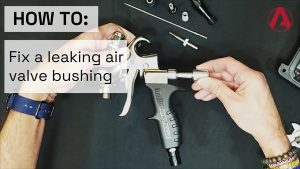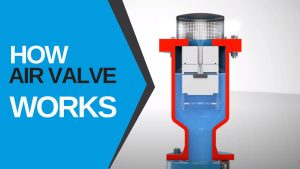The Histroy of the Valve
Valves are devices used to control fluid flow, pressure and flow direction. The fluid to be controlled may be liquid, gas, gas-liquid mixture or solid-liquid mixture. The valve is usually composed of valve body, bonnet, valve seat, opening and closing parts, driving mechanism, seals and fasteners. The control function of the valve is realized by driving the mechanism or fluid to drive the opening and closing member to move up and down, slide, swing or rotate to change the size of the flow channel area.
The valve has a wide range of uses, and it is closely related to people’s daily lives. For example, faucets for water pipes and pressure reducing valves for liquefied petroleum gas stoves are all valves. Valves are also indispensable components in various mechanical equipment such as internal combustion engines, steam engines, compressors, pumps, pneumatic transmissions, hydraulic transmission vehicles, ships and aircraft.
Two thousand years ago BC, the Chinese used bamboo pipes and wooden plug valves on water pipelines, and later used sluices on irrigation channels, plate check valves on smelting wind boxes, and bamboo on well salt mining. Pipeline and plate check valves extract brine.
With the development of smelting technology and hydraulic machinery, copper and lead plug valves have appeared in Europe. With the use of the boiler, the lever hammer safety valve appeared again in 1681. Before the emergence of the Watt steam engine in 1769, plug valves and check valves have been the most important valves. The invention of the steam engine brought the valve into the field of machinery industry. In addition to plug valves, safety valves, and check valves, Watt steam engines also use butterfly valves to regulate the flow. With the increase of steam flow and pressure, the use of plug valves to control the steam inlet and exhaust of the steam engine has been unable to meet the needs, so the slide valve
appeared. Around 1840, globe valves with threaded stems and wedge gate valves with trapezoidal threaded stems appeared one after another. This was a major breakthrough in valve development. The emergence of these two types of valves not only met the requirements of various industries for increasing pressure and temperature at the time, but also initially met the requirements for flow regulation. Since then, with the development of the power industry, petroleum industry, chemical industry and shipbuilding industry, various high and medium pressure valves have developed rapidly.
After the Second World War, due to the development of polymer materials, lubricating materials, stainless steel and cobalt-based cemented carbide, ancient plug valves and butterfly valves have been used in new applications, and ball valves and diaphragm valves have been rapidly
developed. The varieties of globe valves, gate valves and other valves have increased, and their quality has improved. The valve manufacturing
industry has gradually become an important sector of the machinery industry. Valves can be divided into six types according to the function of use: cut-off valve, regulating valve, check valve, diverter valve, safety valve and multi-purpose valve.
What is a Bellow Seal Gate Valve?
A Bellow Sealed Gate Valve is a industrial process valve designed to eliminate valve leakage and are also known as ‘Zero Leak Valve’ or ‘Emission Free Valve.’
In particular chemical processes the fluids in the pipes are often toxic, radioactive and hazardous. Bellow sealed gate valves are used to prevent leakage of any toxic chemical to the atmosphere.
Specifications of Bellow Seal Gate Valve
| Type of Wedge | Flexible Wedge Solid Wedge |
| Construction of Bonnet | Bolted Bonnet Welded Bonnet Extended Bonnet |
| End Connections | Flanged, BW, SW, THR, HUB, PE |
| Opeartion | Handwheel, Gear, Bare Stem, Actuator |
| Options | Extended Bonnet Bellow Sealed Heating Jacket DBB Configuration |
| Bellow Seal Materials | 304 321 316Ti Alloy 625 C276 |
| Size & Bore | 1/2″ – 12″ DN10 – DN300 |
Features and Benefits of Bellow Seal Gate Valve
- Long cycle life bellows (3000 cycles): Designed and qualification tested for high pressure/temperature service.
- Bellows monitoring port (optional): A plug can beconnected with the space above the bellows to monitor performance.
- Two secondary stem seals: a) Backseat in open position; b) Graphite packing.
- Superior seating faces: Seats CoCr alloy hardfaced and wedge is solid CoCr alloy.
Applications of Bellow Sealed Gate Valve
Bellow sealed gate valves from ZECO Valve can be deployed for a wide variety of applications in the oil & gas and petrochemical industries when high quality, reliable valves are required. A few example applications include:
- High-temperature services
- High-cycle and switching services
- Emergency shutdown valves
- High-integrity pressure protection system
- High-pressure oxygen, nitrogen, or hydrogen
- Solids handling (powders, fines, dust, and catalysts)
- Polyethylene or polypropylene
- Coal conversion & gasification
- Thermal fluids
- Separator, filter, and drying systems
- Compressor stations
- On/off isolation service
- Oil & gas manifolds
ZECO Valve is a professional bellow seal gate valve manufacturer. If any inquiry, you can contact commercial@zecovalve.com
Related Tags :
Ten articles before and after












